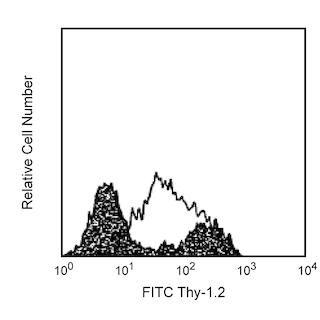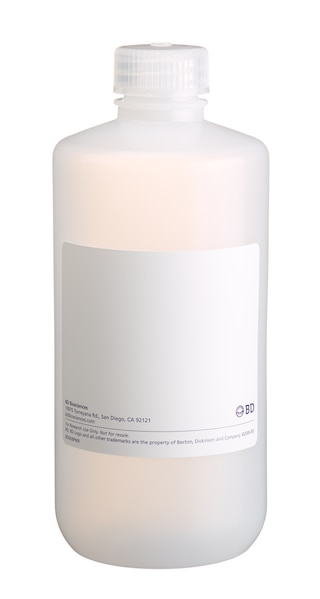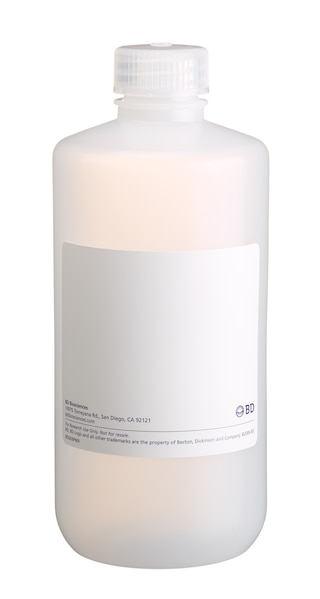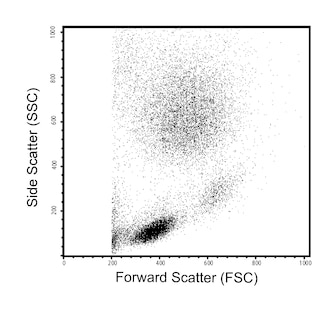-
Reagents
- Flow Cytometry Reagents
-
Western Blotting and Molecular Reagents
- Immunoassay Reagents
-
Single-Cell Multiomics Reagents
- BD® OMICS-Guard Sample Preservation Buffer
- BD® AbSeq Assay
- BD® Single-Cell Multiplexing Kit
- BD Rhapsody™ ATAC-Seq Assays
- BD Rhapsody™ Whole Transcriptome Analysis (WTA) Amplification Kit
- BD Rhapsody™ TCR/BCR Next Multiomic Assays
- BD Rhapsody™ Targeted mRNA Kits
- BD Rhapsody™ Accessory Kits
- BD® OMICS-One Protein Panels
-
Functional Assays
-
Microscopy and Imaging Reagents
-
Cell Preparation and Separation Reagents
-
- BD® OMICS-Guard Sample Preservation Buffer
- BD® AbSeq Assay
- BD® Single-Cell Multiplexing Kit
- BD Rhapsody™ ATAC-Seq Assays
- BD Rhapsody™ Whole Transcriptome Analysis (WTA) Amplification Kit
- BD Rhapsody™ TCR/BCR Next Multiomic Assays
- BD Rhapsody™ Targeted mRNA Kits
- BD Rhapsody™ Accessory Kits
- BD® OMICS-One Protein Panels
- Ireland (English)
-
Change country/language
Old Browser
This page has been recently translated and is available in French now.
Looks like you're visiting us from United States.
Would you like to stay on the current country site or be switched to your country?
BD Pharmingen™ Alexa Fluor™ 488 Rat Anti-Mouse F4/80
Clone T45-2342 (RUO)

Multicolor flow cytometric analyses of F4/80 expression. The bivariate pseudocolor density plots showing the correlated expression of F4/80 (or Ig Isotype control staining) versus CD11b (Mouse Splenocytes; Top Plots) or CD117 (Mouse Peritoneal Exudate Cells; Bottom Plots) were derived from gated events with the forward and side light-scatter characteristics of viable (7-AAD-negative) monocytes. Flow cytometry and data analysis were performed using a BD LSRFortessa™ Cell Analyzer System and FlowJo™ software. Data shown on this Technical Data Sheet are not lot specific.
Top Plots - Mouse splenocytes. C57BL/6 mouse splenic leucocytes were preincubated with Purified Rat Anti-Mouse CD16/CD32 antibody (Mouse BD Fc Block™) (Cat. No. 553141/553142) and stained with PE Rat Anti- CD11b antibody (Cat. No. 553311/557397/561689) and with either Alexa Fluor™ 488 Rat IgG2a Isotype Control (Cat. No. 557676; Left Plot) or Alexa Fluor™ 488 Rat Anti-Mouse F4/80 antibody (Cat. No. 567201; Right Plot) at 1 µg/test. BD Via-Probe™ Cell Viability 7-AAD Solution (Cat. No. 555815/555816) was added to cells right before analysis.
Bottom Plots - Mouse peritoneal exudate cells (PEC). C57BL/6 mouse PEC were similarly pretreated with Mouse BD Fc Block™, stained with BD Horizon™ BV421 Rat Anti-Mouse CD117 antibody (Cat. No. 566290/562609) and either Alexa Fluor™ 488 Rat IgG2a Isotype Control (Left Plot) or Alexa Fluor™ 488 Rat Anti-Mouse F4/80 antibody (Right Plot) at 1 µg/test flowed by BD Via-Probe™ Cell Viability 7-AAD Solution, and analyzed.

.png)
Multicolor flow cytometric analyses of F4/80 expression. The bivariate pseudocolor density plots showing the correlated expression of F4/80 (or Ig Isotype control staining) versus CD11b (Mouse Splenocytes; Top Plots) or CD117 (Mouse Peritoneal Exudate Cells; Bottom Plots) were derived from gated events with the forward and side light-scatter characteristics of viable (7-AAD-negative) monocytes. Flow cytometry and data analysis were performed using a BD LSRFortessa™ Cell Analyzer System and FlowJo™ software. Data shown on this Technical Data Sheet are not lot specific.
Top Plots - Mouse splenocytes. C57BL/6 mouse splenic leucocytes were preincubated with Purified Rat Anti-Mouse CD16/CD32 antibody (Mouse BD Fc Block™) (Cat. No. 553141/553142) and stained with PE Rat Anti- CD11b antibody (Cat. No. 553311/557397/561689) and with either Alexa Fluor™ 488 Rat IgG2a Isotype Control (Cat. No. 557676; Left Plot) or Alexa Fluor™ 488 Rat Anti-Mouse F4/80 antibody (Cat. No. 567201; Right Plot) at 1 µg/test. BD Via-Probe™ Cell Viability 7-AAD Solution (Cat. No. 555815/555816) was added to cells right before analysis.
Bottom Plots - Mouse peritoneal exudate cells (PEC). C57BL/6 mouse PEC were similarly pretreated with Mouse BD Fc Block™, stained with BD Horizon™ BV421 Rat Anti-Mouse CD117 antibody (Cat. No. 566290/562609) and either Alexa Fluor™ 488 Rat IgG2a Isotype Control (Left Plot) or Alexa Fluor™ 488 Rat Anti-Mouse F4/80 antibody (Right Plot) at 1 µg/test flowed by BD Via-Probe™ Cell Viability 7-AAD Solution, and analyzed.

Multicolor flow cytometric analyses of F4/80 expression. The bivariate pseudocolor density plots showing the correlated expression of F4/80 (or Ig Isotype control staining) versus CD11b (Mouse Splenocytes; Top Plots) or CD117 (Mouse Peritoneal Exudate Cells; Bottom Plots) were derived from gated events with the forward and side light-scatter characteristics of viable (7-AAD-negative) monocytes. Flow cytometry and data analysis were performed using a BD LSRFortessa™ Cell Analyzer System and FlowJo™ software. Data shown on this Technical Data Sheet are not lot specific.
Top Plots - Mouse splenocytes. C57BL/6 mouse splenic leucocytes were preincubated with Purified Rat Anti-Mouse CD16/CD32 antibody (Mouse BD Fc Block™) (Cat. No. 553141/553142) and stained with PE Rat Anti- CD11b antibody (Cat. No. 553311/557397/561689) and with either Alexa Fluor™ 488 Rat IgG2a Isotype Control (Cat. No. 557676; Left Plot) or Alexa Fluor™ 488 Rat Anti-Mouse F4/80 antibody (Cat. No. 567201; Right Plot) at 1 µg/test. BD Via-Probe™ Cell Viability 7-AAD Solution (Cat. No. 555815/555816) was added to cells right before analysis.
Bottom Plots - Mouse peritoneal exudate cells (PEC). C57BL/6 mouse PEC were similarly pretreated with Mouse BD Fc Block™, stained with BD Horizon™ BV421 Rat Anti-Mouse CD117 antibody (Cat. No. 566290/562609) and either Alexa Fluor™ 488 Rat IgG2a Isotype Control (Left Plot) or Alexa Fluor™ 488 Rat Anti-Mouse F4/80 antibody (Right Plot) at 1 µg/test flowed by BD Via-Probe™ Cell Viability 7-AAD Solution, and analyzed.
.png)

BD Pharmingen™ Alexa Fluor™ 488 Rat Anti-Mouse F4/80
.png)
Regulatory Status Legend
Any use of products other than the permitted use without the express written authorization of Becton, Dickinson and Company is strictly prohibited.
Preparation And Storage
Recommended Assay Procedures
BD™ CompBeads can be used as surrogates to assess fluorescence spillover (Compensation). When fluorochrome conjugated antibodies are bound to CompBeads, they have spectral properties very similar to cells. However, for some fluorochromes there can be small differences in spectral emissions compared to cells, resulting in spillover values that differ when compared to biological controls. It is strongly recommended that when using a reagent for the first time, users compare the spillover on cells and CompBead to ensure that BD Comp beads are appropriate for your specific cellular application.
Product Notices
- Please refer to www.bdbiosciences.com/us/s/resources for technical protocols.
- Alexa Fluor® 488 fluorochrome emission is collected at the same instrument settings as for fluorescein isothiocyanate (FITC).
- Caution: Sodium azide yields highly toxic hydrazoic acid under acidic conditions. Dilute azide compounds in running water before discarding to avoid accumulation of potentially explosive deposits in plumbing.
- For fluorochrome spectra and suitable instrument settings, please refer to our Multicolor Flow Cytometry web page at www.bdbiosciences.com/colors.
- An isotype control should be used at the same concentration as the antibody of interest.
- This product is provided under an intellectual property license between Life Technologies Corporation and BD Businesses. The purchase of this product conveys to the buyer the non-transferable right to use the purchased amount of the product and components of the product in research conducted by the buyer (whether the buyer is an academic or for-profit entity). The buyer cannot sell or otherwise transfer (a) this product (b) its components or (c) materials made using this product or its components to a third party or otherwise use this product or its components or materials made using this product or its components for Commercial Purposes. Commercial Purposes means any activity by a party for consideration and may include, but is not limited to: (1) use of the product or its components in manufacturing; (2) use of the product or its components to provide a service, information, or data; (3) use of the product or its components for therapeutic, diagnostic or prophylactic purposes; or (4) resale of the product or its components, whether or not such product or its components are resold for use in research. For information on purchasing a license to this product for any other use, contact Life Technologies Corporation, Cell Analysis Business Unit Business Development, 29851 Willow Creek Road, Eugene, OR 97402, USA, Tel: (541) 465-8300. Fax: (541) 335-0504.
- Please refer to http://regdocs.bd.com to access safety data sheets (SDS).
- Alexa Fluor™ is a trademark of Life Technologies Corporation.
Data Sheets
Companion Products





.png?imwidth=320)
The T45-2342 monoclonal antibody recognizes the mouse F4/80 antigen which is also known as EGF-like module-containing mucin-like hormone receptor-like 1 (EMR1). F4/80 is a 160 kDa glycoprotein that belongs to the EGF-TM7 family of seven-transmembrane spanning cell surface molecules. It is expressed on the surface of granulocytes and a wide range of mature tissue macrophages including, Kupffer cells, splenic red pulp macrophages, microglia, gut lamina propria macrophages, and Langerhans cells. F4/80 expression has also been reported on subpopulations of dendritic cells. F4/80 expression is heterogeneous and may be increased during inflammatory responses as observed in various mouse models of colitis, diabetes and brain injury.
Development References (7)
-
Austyn JM., and Gordon S. F4/80, a monoclonal antibody directed specifically against the mouse macrophage. Eur J Immunol. 1981; 10:805-815. (Biology). View Reference
-
Bodhankar S, Lapato A, Chen Y, Vandenbark AA, Saugstad JA, Offner H. Role for microglia in sex differences after ischemic stroke: importance of M2.. Metab Brain Dis. 2015. (Clone-specific: Flow cytometry). View Reference
-
Gordon S, Hamann J, Lin HH, Stacey M. F4/80 and the related adhesion-GPCRs. Eur J Immunol. 2011; 41(9):2472-2476. (Biology). View Reference
-
Ito F, Ku AW, Bucsek MJ, et al. Immune Adjuvant Activity of Pre-Resectional Radiofrequency Ablation Protects against Local and Systemic Recurrence in Aggressive Murine Colorectal Cancer.. PLoS ONE. 2015; 10(11):e0143370. (Clone-specific: Flow cytometry). View Reference
-
Krüger T, Benke D, Eitner F, et al. Identification and functional characterization of dendritic cells in the healthy murine kidney and in experimental glomerulonephritis. J Am Soc Nephrol. 2004; 15(3):613-621. (Biology). View Reference
-
Leenen PJ, Radosević K, Voerman JS, et al. Heterogeneity of mouse spleen dendritic cells: in vivo phagocytic activity, expression of macrophage markers, and subpopulation turnover.. J Immunol. 1998; 160(5):2166-73. (Biology). View Reference
-
McKnight AJ, Macfarlane AJ, Dri P, Turley L, Willis AC, Gordon S. Molecular cloning of F4/80, a murine macrophage-restricted cell surface glycoprotein with Homology to the G-protein-linked transmembrane & hormone receptor family. J Biol Chem. 1996; 271:486. (Biology). View Reference
Please refer to Support Documents for Quality Certificates
Global - Refer to manufacturer's instructions for use and related User Manuals and Technical data sheets before using this products as described
Comparisons, where applicable, are made against older BD Technology, manual methods or are general performance claims. Comparisons are not made against non-BD technologies, unless otherwise noted.
Please refer to Support Documents for Quality Certificates
Global - Refer to manufacturer's instructions for use and related User Manuals and Technical data sheets before using this products as described
Comparisons, where applicable, are made against older BD Technology, manual methods or are general performance claims. Comparisons are not made against non-BD technologies, unless otherwise noted.
For Research Use Only. Not for use in diagnostic or therapeutic procedures.